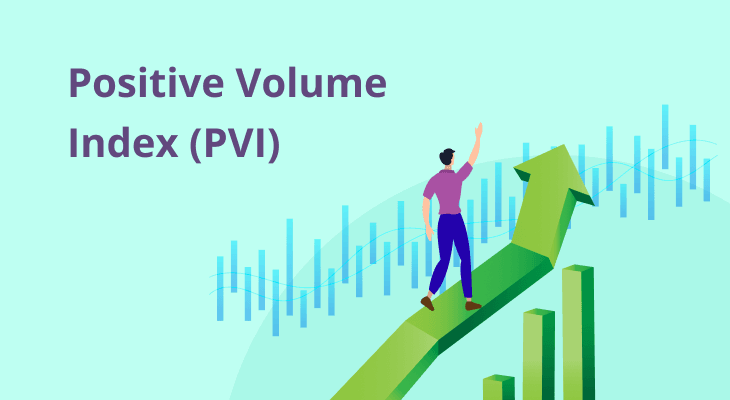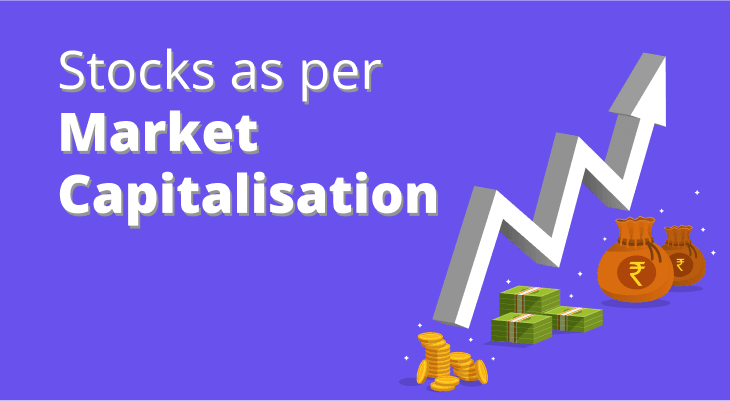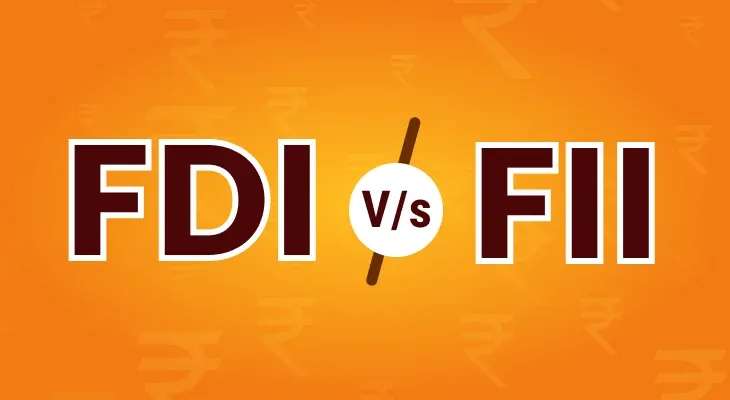
Table of content
- What Is the Positive Volume Index (NVI)?
- How is PVI Calculated?
- PVI vs. Negative Volume Index (NVI)
- Significance of PVI in Market Analysis
- Interpreting PVI Signals
- How PVI Helps Identify Trends and Market Strength
- Limitations of the Positive Volume Index Indicator
- Combining PVI with Other Technical Indicators
- Conclusion
Positive Volume Index (PVI): Definition and Its Significance in Market Analysis
In share market technical analysis, price is only one piece of the puzzle. Volume plays an equally important role in understanding market sentiment and trend strength. Traders often look at how price behaves under changing volume conditions to gain insights into the actions of different market participants. This is where indicators like the Positive Volume Index (PVI) come in.
The positive volume index indicator focuses on market behaviour during periods of increased trading activity. It’s based on the idea that the general public or less-informed traders are more active during high-volume days. By analysing how prices move in response to high volume, PVI helps traders spot whether this increased participation supports or weakens the current trend.
Let’s dive into what the PVI is, how it works, and how you can incorporate it into your trading toolkit.
What Is the Positive Volume Index (NVI)?
The Positive Volume Index (PVI) is a technical indicator that tracks price movement on days when trading volume is higher than the previous day. It assumes that large volumes indicate public participation, and price movements during these times may reflect retail trader sentiment.
PVI helps in identifying how the market reacts when activity surges. If the price goes up on high-volume days, the PVI rises, suggesting that the crowd is buying and potentially driving the trend. If the price drops on high volume, the PVI will fall, indicating bearish sentiment among the general market participants.
Traders and analysts use the positive volume index indicator to validate trends, spot potential reversals, and assess overall market participation.
How is PVI Calculated?
The Positive Volume Index (PVI) is calculated in a way that it only changes when today’s trading volume is higher than the previous day’s volume. On low-volume days, it remains unchanged. This selective calculation ensures that the indicator focuses exclusively on periods of elevated market activity.
- If today's volume > yesterday's volume:
PVI(today) = PVI(yesterday) + [(Price(today) − Price(yesterday)) / Price(yesterday)] × PVI(yesterday)
- If today's volume ≥ yesterday's volume:
PVI(today) = PVI(yesterday)
Step-by-Step Example:
Let’s say:
- PVI = 1000 (base value)
- Yesterday's volume = 1 lakh shares
- Today’s volume = 1.5 lakh shares (lower)
- Yesterday's closing price = ₹ 100
- Today’s closing price = ₹ 103
Since today’s volume is higher, the price change is 3%:
- PVI(today) = 1000 + (0.02 × 1000) = 1030
If the next day’s volume is lower, the PVI will remain at 1030, unchanged, until volume picks up again.
This approach helps filter out noise and focuses your attention on how price behaves when more participants enter the market.
PVI vs. Negative Volume Index (NVI)
The Negative Volume Index (NVI) is the opposite of PVI. It tracks price movements on low-volume days, under the assumption that smart money operates quietly when fewer people are trading. In contrast:
- PVI responds to days with increased volume.
- NVI only changes on days with decreased volume.
Both indicators can be plotted together on stock charts to understand how different types of market participants may be influencing the trend. For instance:
- If both PVI and NVI are rising, the trend is supported by both retail and institutional traders.
- If PVI rises but NVI falls, the trend might be driven by hype rather than informed positions.
Together, they help create a more balanced view of market dynamics.
Significance of PVI in Market Analysis
The positive volume index indicator serves as a sentiment gauge, especially useful for understanding crowd behaviour during periods of heightened trading activity. Here’s why it matters:
- Trend Confirmation: If the price is rising on high-volume days and PVI is also increasing, it suggests that the uptrend has strong backing.
- Early Warnings: A falling PVI while prices still rise could be an early warning that the trend lacks strong volume support.
- Momentum Insight: PVI helps identify whether momentum is building or fading by tracking price behaviour alongside volume increases.
This makes PVI especially valuable in identifying the health of a trend before traditional price indicators give a signal.
Interpreting PVI Signals
Understanding how to interpret signals from the Positive Volume Index (PVI) is essential for making effective trading decisions. PVI is, usually, most insightful when used in conjunction with a moving average — commonly a 255-day exponential moving average (EMA) — to filter out short-term noise and highlight longer-term trends.
Bullish Signals
- PVI Crossing Above Its Moving Average: This is considered a positive signal indicating that price increases on high-volume days are gaining strength. It suggests broad market participation, particularly from retail investors, which often fuels ongoing trends.
- Price and PVI Both Rising: When the price of a stock rises on high-volume days and the PVI climbs in parallel, it reflects strong retail enthusiasm. This kind of synchronised movement indicates that the trend is not only present but is likely to be sustainable in the short to medium term.
- PVI Making New Highs: If the PVI reaches new highs while price remains stable or only slightly increases, it may point to an underlying accumulation phase—where strong interest is building up before a potential breakout.
Bearish Signals
- PVI Crossing Below Its Moving Average: This could signal weakening momentum or reduced participation on up days. If the price is still rising but the PVI slips below its moving average, it may indicate that fewer traders are supporting the rally, increasing the risk of a pullback.
- Divergence Between Price and PVI: One of the most telling bearish signals is when the price makes new highs, but the PVI starts to flatten or decline. This divergence suggests that rising prices are not supported by increased public trading activity, potentially pointing to trend exhaustion.
Neutral or Cautionary Signs
- PVI Moves Sideways While Price Rises: If the PVI flattens even as the price climbs, it might mean that fewer participants are getting involved in the trend. While not immediately bearish, this pattern should be watched closely for other confirming signals of weakening momentum.
- Sudden PVI Spikes Without Price Follow-Through: A sudden surge in the PVI without a corresponding price breakout might indicate speculative interest or a reaction to short-term news. Such scenarios often lead to volatility or false breakouts, requiring careful analysis before acting.
How PVI Helps Identify Trends and Market Strength
The PVI helps determine not just the presence of a trend but also its quality. For example:
- Sustained Uptrend: A steadily rising PVI indicates growing public interest, adding strength to the trend.
- Trend Exhaustion: If price continues upward but PVI shows divergence, it could point to overbought conditions or loss of momentum.
- Support and Resistance: Reactions around previous PVI highs or lows can act as psychological support or resistance zones.
By helping you assess whether a rally or dip is supported by active participation, the positive volume index indicator adds depth to your market analysis.
Let’s say a stock has been trading sideways for months. Suddenly, the volume spikes and the stock price starts inching upward. You notice that the PVI crosses above its 255-day EMA and begins rising steadily. This signal may suggest a shift in sentiment and potential trend formation. However, if this is followed by a dip in volume and the PVI flattens while price continues to rise, it could indicate a lack of strong conviction behind the move — requiring caution.
By interpreting the PVI in the context of price action and volume behaviour, you can better assess the strength, quality, and sustainability of a trend. Always consider PVI signals as part of a broader strategy that includes confirmation from other indicators or chart patterns.
Limitations of the Positive Volume Index Indicator
While the PVI is useful, it’s not without its limitations, such as:
- One-Sided Analysis: It only looks at high-volume days. Important information on low-volume days is ignored.
- Lagging Indicator: Like many trend-following tools, PVI signals often appear after the trend has begun.
- Susceptible to Noise: On certain days, spikes in volume may not reflect real market sentiment (e.g., due to news events or bulk trades).
- Overreliance Risk: Relying solely on the PVI without confirming with price action or other indicators can lead to false signals.
Due to these limitations, it is recommended to use the PVI in conjunction with other tools to improve accuracy.
Combining PVI with Other Technical Indicators
To strengthen trading signals, the positive volume index should be used alongside complementary indicators. Here are a few effective pairings:
1. Moving Averages
Moving averages (such as 50-day or 200-day EMAs) help determine trend direction. If the PVI crosses above its moving average while the stock trades above its 200-day EMA, it confirms bullish momentum.
2. MACD (Moving Average Convergence Divergence)
MACD helps identify momentum shifts. When both MACD and PVI are rising, it adds weight to a trend continuation signal. Divergence between MACD and PVI may hint at weakening strength.
3. Relative Strength Index (RSI)
RSI measures overbought or oversold conditions. A high RSI with a rising PVI could mean a strong but potentially overheated market. Conversely, a low RSI with a falling PVI may indicate a possible bottom forming.
4. Volume Oscillator
This tool compares short- and long-term volume averages. When the volume oscillator rises and PVI follows, it shows genuine participation behind the move.
5. NVI (Negative Volume Index)
Pairing PVI with NVI offers a dual perspective—PVI captures crowd behaviour, while NVI reflects smart money actions. If both indices are aligned, it strengthens the trend signal. Divergences can indicate a market turning point.
Using these tools in tandem with the positive volume index screener allows traders to filter stocks that show strong volume-backed moves, improving trade selection and reducing false positives.
Conclusion
The Positive Volume Index (PVI) is a powerful yet underrated tool that helps traders understand how price responds to high-volume activity. It acts as a mirror to retail sentiment and can provide crucial insight into the strength and sustainability of a trend.
By combining PVI with price analysis and other indicators like MACD, RSI, or NVI, you can build a more reliable trading strategy. While no indicator is foolproof, the PVI adds a valuable layer to your technical toolkit — especially when interpreted in the broader context of volume-driven behaviour.
Whether you're analysing individual stocks or using a positive volume index screener, understanding and applying the PVI can give you a sharper edge in navigating market cycles.
FAQ
What is the Positive Volume Index (PVI)?
The Positive Volume Index (PVI) is a technical indicator that tracks price movements on days when trading volume increases. It assumes that retail traders are more active on high-volume days and helps identify how their participation may influence market trends.
How is the PVI different from the Negative Volume Index (NVI)?
While PVI focuses on high-volume days, the Negative Volume Index (NVI) tracks price changes during low-volume days. PVI reflects crowd behaviour, whereas NVI is believed to reveal the activity of more informed or institutional investors.
How is the Positive Volume Index calculated?
PVI updates only when today’s volume exceeds yesterday’s. The formula multiplies the percentage price change by the previous day’s PVI and adds it to the prior value, allowing traders to track the impact of volume-driven price shifts.
What does a rising PVI indicate?
A rising PVI suggests strong retail participation during price increases, which may confirm the strength of an uptrend. It shows that more traders are actively supporting the price movement on days with increased volume.
What does it mean when PVI is falling?
A falling PVI during high-volume days may indicate that the general public is selling or losing confidence in the trend. It can be an early signal of weakening momentum or a potential shift in market direction.
Can PVI predict market trends on its own?
PVI is best used as a supportive tool rather than a standalone signal. It helps confirm price trends but should be combined with other indicators like moving averages, RSI, or MACD to improve accuracy and reduce false signals.
What kind of traders use the PVI?
PVI is commonly used by technical traders who want to assess crowd sentiment and validate price movements. It is especially useful for swing traders and position traders aiming to ride volume-backed trends.
How does the PVI react to low-volume days?
The PVI remains unchanged on days when trading volume is the same or lower than the previous day. This allows it to focus exclusively on sessions where increased activity may influence market direction.
How can I use PVI with a stock screener?
You can use a positive volume index screener to filter stocks showing bullish or bearish PVI behaviour. This helps identify potential opportunities where price moves are backed by increased trading volume and retail interest.
What are the limitations of using PVI?
PVI ignores low-volume days and may lag in fast-changing markets. It can also produce misleading signals if volume spikes are unrelated to market sentiment. For best results, always confirm with price trends and other indicators.


